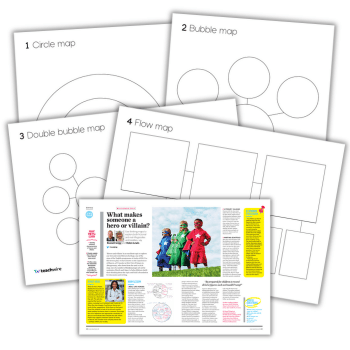How to Get Early Years Recruitment Right

Mistakes when employing people can be costly both financially and in terms of your setting’s reputation, explains Vicky Stanton…

- by Vicky Stanton
- Accredited coach and former director of HR 4 Your Nursery Visit website

Recruitment matters – get it wrong and you could be leading a team with low morale, poor productivity and that’s subject to a regular turnover of personnel, which can impact heavily on your bottom line (not least because you’ll have the cost of having to go through the recruitment process yet again!). So how do you make sure you get it right?
The fact is that you will never be 100% certain whether you’ve made the right decision, but you can put good practice into place to raise the probability of recruiting someone who will meet your requirements and remain with your company, and ensure you’re always complying with the law.
Why are you recruiting?
First things first – a vacancy will arise due to one of the following reasons:
- Someone resigns, retires or is dismissed
- Someone is promoted
- Someone requests to work flexibly by reducing their hours
- You have a new position that has not been required previously.
This presents an opportunity to consider restructuring, or to reassess the requirements of the job. This assessment is valid whether it is to fill an existing job or a new one.
Think about whether the function of the role has changed; whether you anticipate any changes that will require different or more flexible skills from the jobholder; and whether you need to recruit to the same work pattern (Is it full time? Is it one role or would it more effective to split the role into two with different skills?).
The process
There are three broad stages of recruitment that you’ll need to go through…
1. Define the requirements
This is the preparation stage, which has already started in the considerations above. You will need to prepare both a job description and a person specification.
Job description A good job description is useful for all jobs. It can help with induction and training. It enables prospective applicants to assess themselves for the job and provides a benchmark for judging achievements. It refers to the post not the person.
The job description should detail:
- The main purpose of the job, ideally described in one sentence (if possible)
- The main tasks of the job
- The scope of the job – information such as the number of staff or any budgets (detailed in figures) the post holder is responsible for
Person specification The person specification details the profile of the ideal person the organisation is looking for to fill the job. It refers to the person not the post.
When drawing up the job description consider:
- What skills, knowledge and aptitudes are related to the job?
- What type(s) of experience is necessary?
- What competencies are necessary?
- Are there specific qualifications or training that a successful applicant should have?
Beware! Even at this stage of the process, a potential applicant can bring a claim if they feel the process is discriminatory.
It is against the law to treat someone less favourably than someone else because of a personal characteristic. There are nine protected characteristics in law:
- Age
- Being or becoming a transsexual person
- Being married or in a civil partnership
- Being pregnant or having a child
- Disability
- Race, including colour, nationality, ethnic or national origin
- Religion, belief or lack of religion/belief
- Sex
- Sexual orientation
Discrimination does not have to be deliberate or intentional.
Things to be aware of include using ‘gender-biased terms’ eg storeman, handyman; age-inappropriate statements, eg ‘would suit young person’; stating requirements that may discriminate against disability, eg must have a driving licence (of course there will be jobs where this is a clear requirement).
There are always exceptions to the law. An employer can discriminate in recruitment if they are able to prove that a ‘genuine occupational requirement ‘(GOR) or ‘genuine occupational qualification’ (GOQ) in terms of race or sex exists.
2. Attract potential employees
Now you can begin the search for suitable applicants. The objective is to get a good pool of suitable, high-quality candidates who meet your requirements but at the least cost possible.
There are lots of places to advertise. Here are some suggestions:
- Internal recruitment – do you have a pool of staff with the right skills and abilities or could you develop and train the right person? Ensure the process for application is clear and transparent
- Online recruitment sites – eg Indeed or Job search (the job centre)
- Local newspapers and radio – good for less-specialised jobs or for targeting groups in a local area
- Social media – Facebook, LinkedIn, Twitter
- Word of mouth – via existing employees, family friends and relatives
This is not an exhaustive list, but they are some of the more common routes to advertise, some cheaper than others and some at no cost.
Designing adverts Advertisements must be tailored to the level of the target audience and be easily understood.
They must be non-discriminatory, and should avoid any gender or culturally specific language (see Beware! above, as the same guidelines apply).
Note: It is lawful to request information such as marital status, date of birth and ethnic origin for the sole purposes of diversity monitoring, but they should not be part of the main application form. Consider a separate sheet to collect this information.
It is unlawful to ask a prospective employee about their health or any disability before offering them a job. Questions about previous sickness absence are classed as questions that relate to health or disability and must not be asked.
There are some specific circumstances when questions about health and disability can be asked:
- To establish whether the applicant can take part in an assessment to determine their suitability for the job. This includes if the applicant requires any reasonable adjustments to attend the interview.
- To find out whether a job applicant would be able to undertake a function that is intrinsic to the job.
3. Select the right people
Ideally you want invite to interview those who most closely match the skills, experience, competencies and qualifications you have identified on the person specification.
Right to work Prior to the interview it’s advisable to check that the applicant is allowed to work in the UK. Visit gov.uk/check-job-applicant-right-to-work to find out more.
The interview This is an opportunity to sell the company to potential candidates and assess each candidate’s suitability for the position. It is a two-way process, so it’s important to get the basics right.
Remember, you are seeking to recruit the best person for the job not the best interviewee on the day, so the more relaxed you can make the applicant, the more you will be able to learn about their skills and abilities.
Consider the location of the interviews and who will conduct them. Make sure they keep to time and the interviewers are prepared. Ask the same key questions to each applicant so you can compare answers, and expect to answer questions from the applicants.
Do take notes during the interview so you have something to refer back to. Do not write anything inappropriate in the notes as you never know when these notes may come into the applicant’s hands or the hands of an employment tribunal! Ability tests It may be appropriate to ask candidates to undertake some other form of selection process in addition to (or instead of) an interview. You could include tests to check presentation skills or practical skills, for example.
Successful applicants Once you have completed your chosen process and have come to a decision as to the chosen applicant, it’s good practice to notify those who took part in the process and were not selected that they have been unsuccessful. It’s often worth waiting until you have made contact with the successful applicant and they have verbally accepted the job.
It’s good practice to put the offer of employment into writing, but make it subject to the receipt of satisfactory references (and and other checks – eg DBS checks). If anything comes back that you are not happy about, you have a legitimate and lawful ‘get out clause’
Vicky Stanton is director of HR 4 Your Nursery – visit inspiringpeoplesolutions.net.







